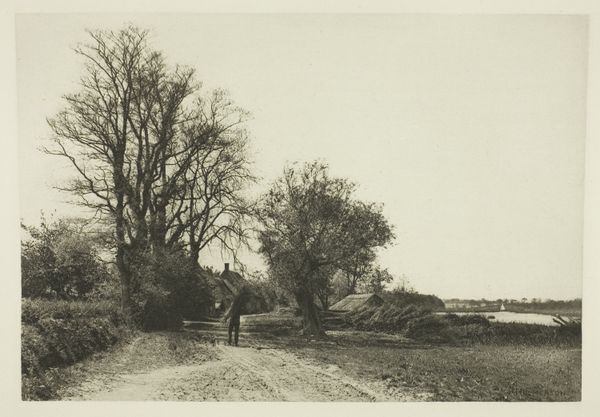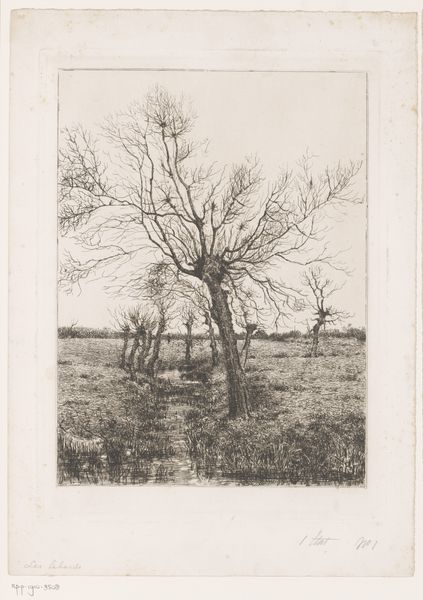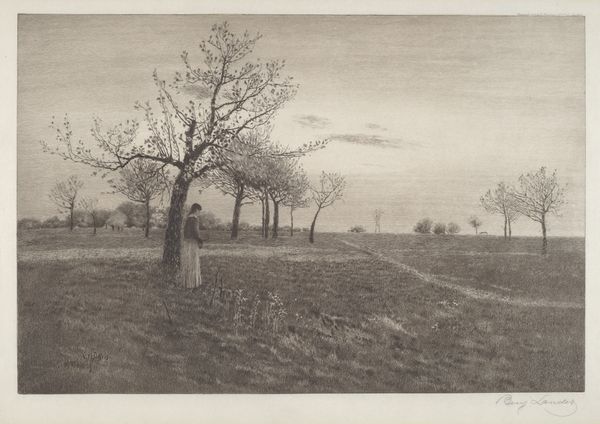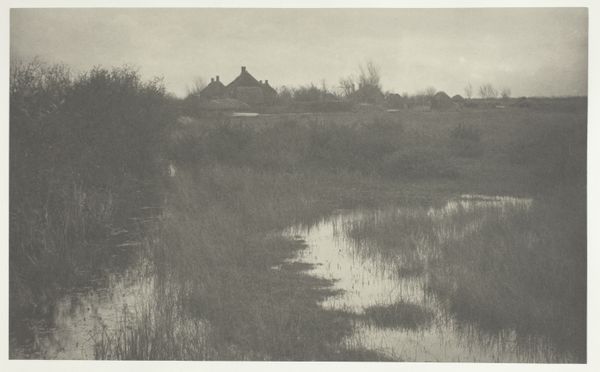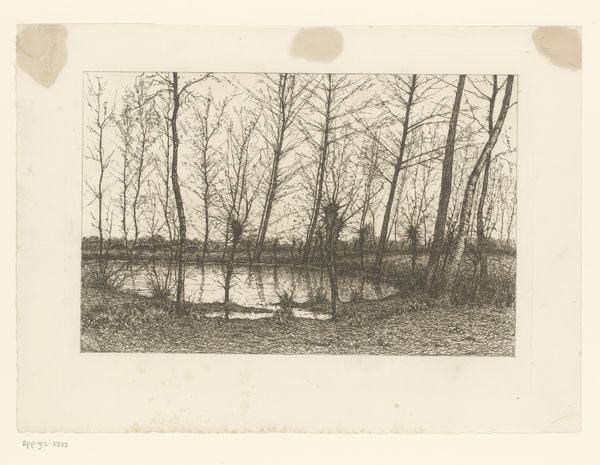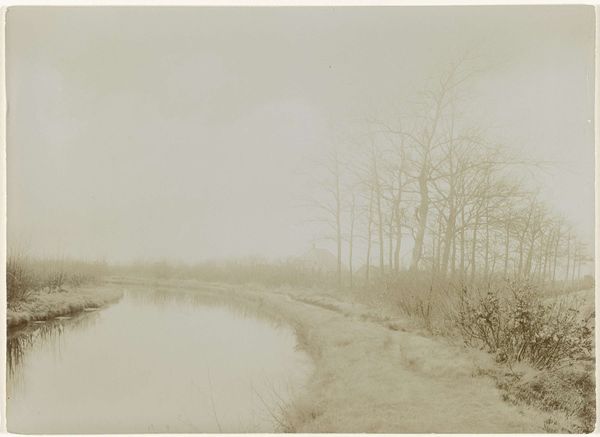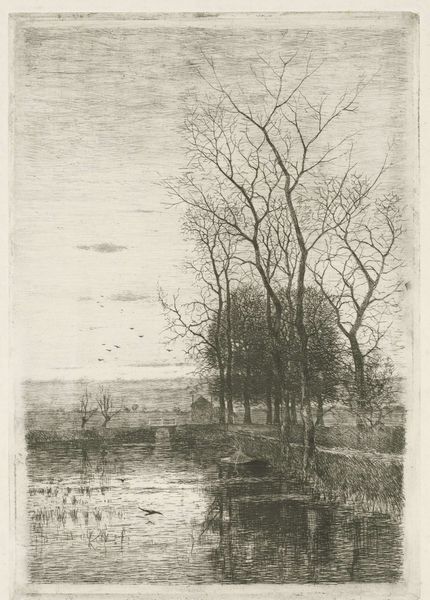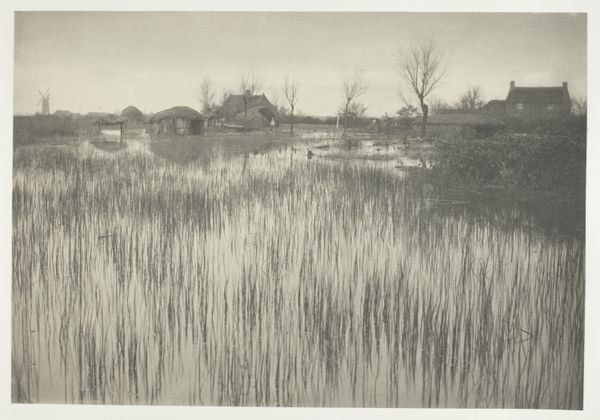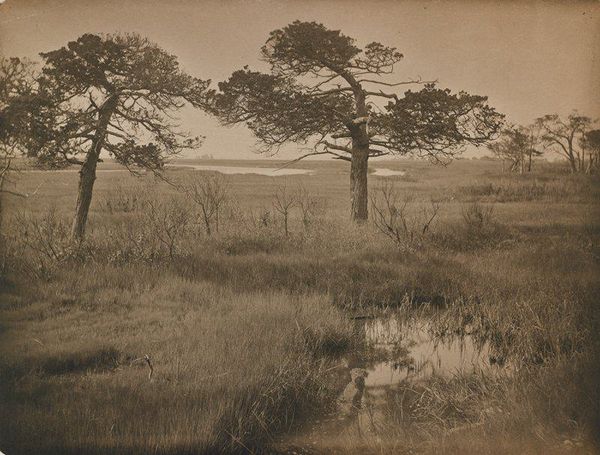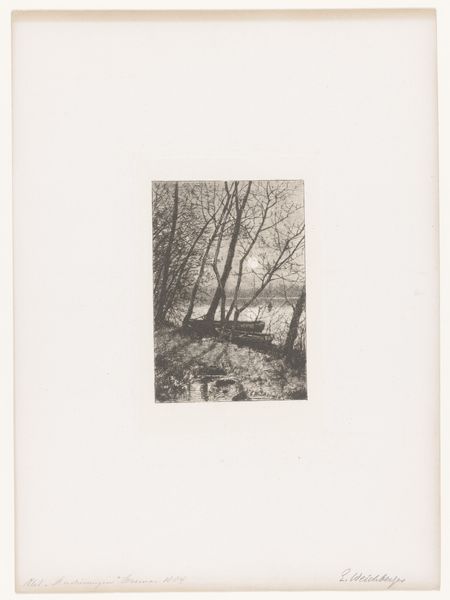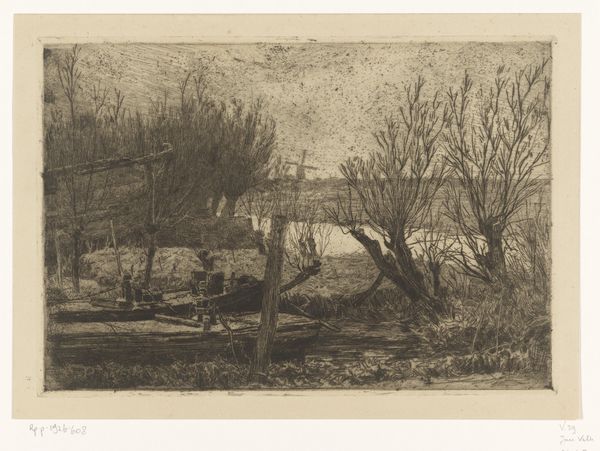
plein-air, photography, gelatin-silver-print
#
16_19th-century
#
pictorialism
#
impressionism
#
plein-air
#
landscape
#
photography
#
gelatin-silver-print
Dimensions: 24.6 × 23.4 cm (image); 42.7 × 34 cm (album page)
Copyright: Public Domain
Editor: Here we have Peter Henry Emerson’s "Leafless March (Suffolk)", a gelatin-silver print possibly made between 1878 and 1888. The photograph has such a desolate feel. It's a landscape, but the leafless tree and flooded field evoke a sense of bleakness. How do you interpret this work within its historical context? Curator: It's fascinating to consider this image within the debates of its time. Emerson was a key figure in Pictorialism, advocating for photography as an art form. "Leafless March" challenges the prevailing view of photography as mere documentation. He sought to elevate photography by capturing a specific mood, a subjective impression of the Suffolk landscape. Consider also the rise of plein-air painting around the same time. Editor: So, was he trying to make photography look more like painting? Curator: Partly, yes. But it was more complex than that. Think about the social implications. Emerson photographed rural laborers in East Anglia, but did so in a way that some considered staged and romanticized, creating idealized images of rural life. One must question whether the artistic portrayal overshadows a deeper, more realistic engagement with social realities. Editor: That’s interesting. I hadn't thought about the staged aspect. So it's not just about aesthetics; it's also about the politics of representation. Curator: Precisely! And who gets to represent whom. How do we see similar struggles with artists grappling with representations and reality today? Editor: I hadn’t thought about it that way. The piece becomes much more complex once we consider the cultural landscape and Emerson’s position within it. Thank you! Curator: My pleasure! Art is never truly created or experienced in a vacuum. Considering socio-historical context always leads to richer interpretations.
Comments
No comments
Be the first to comment and join the conversation on the ultimate creative platform.
